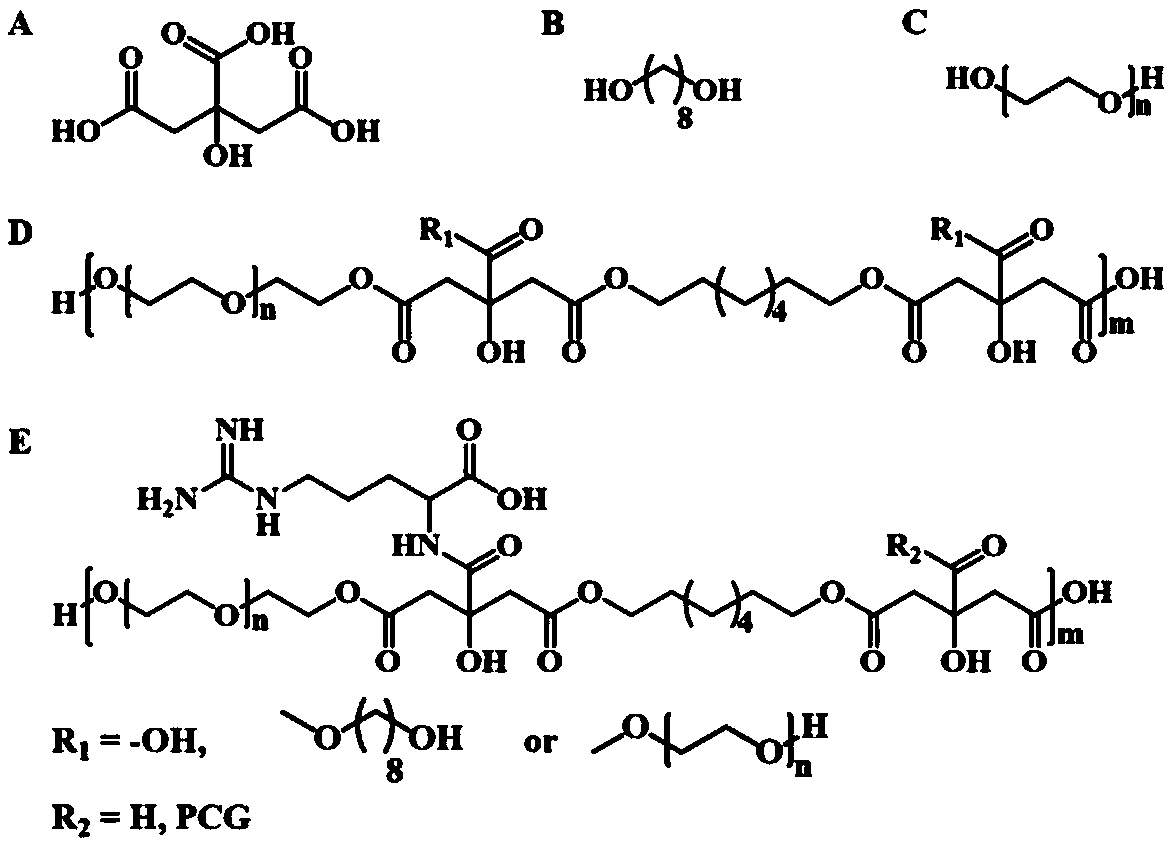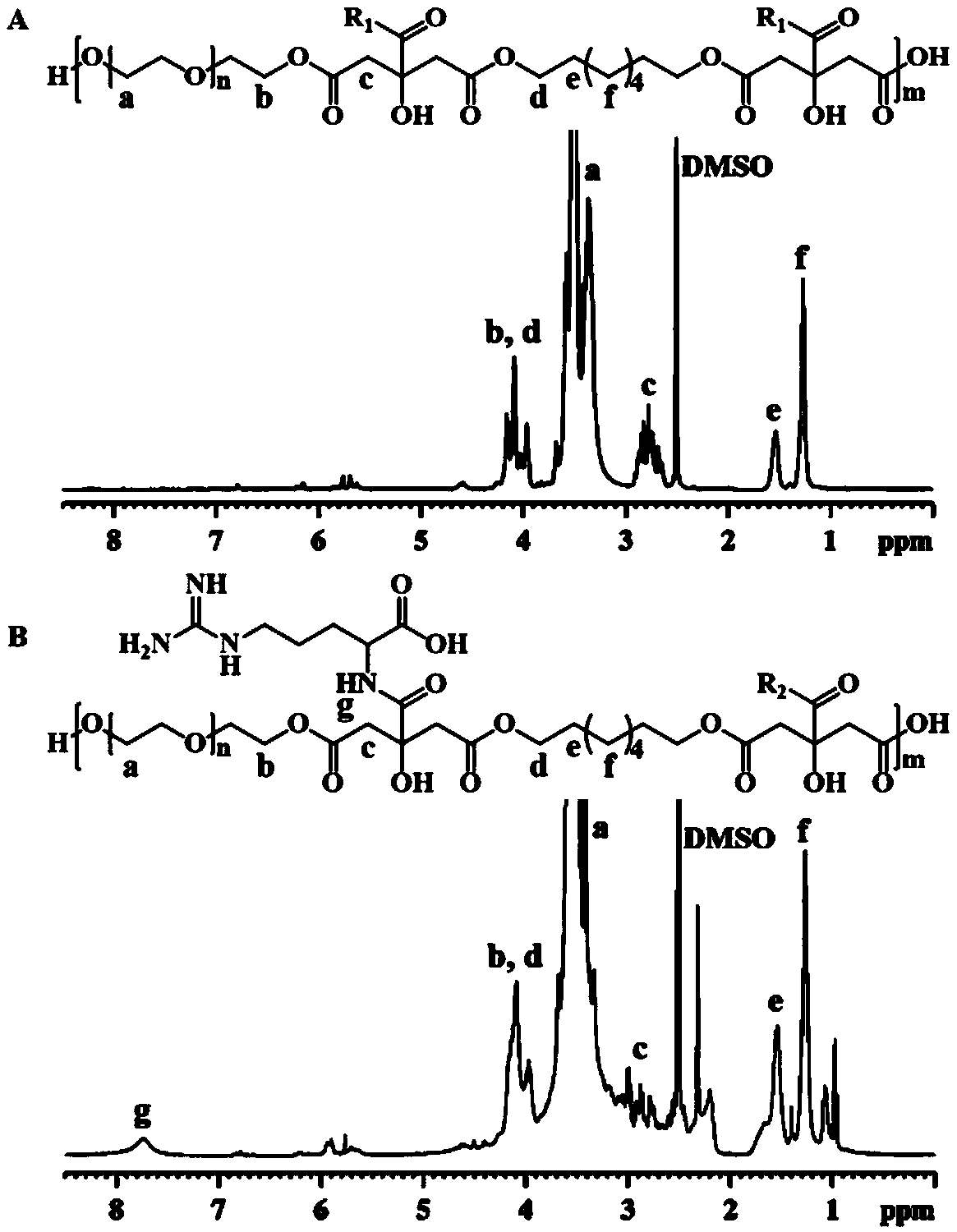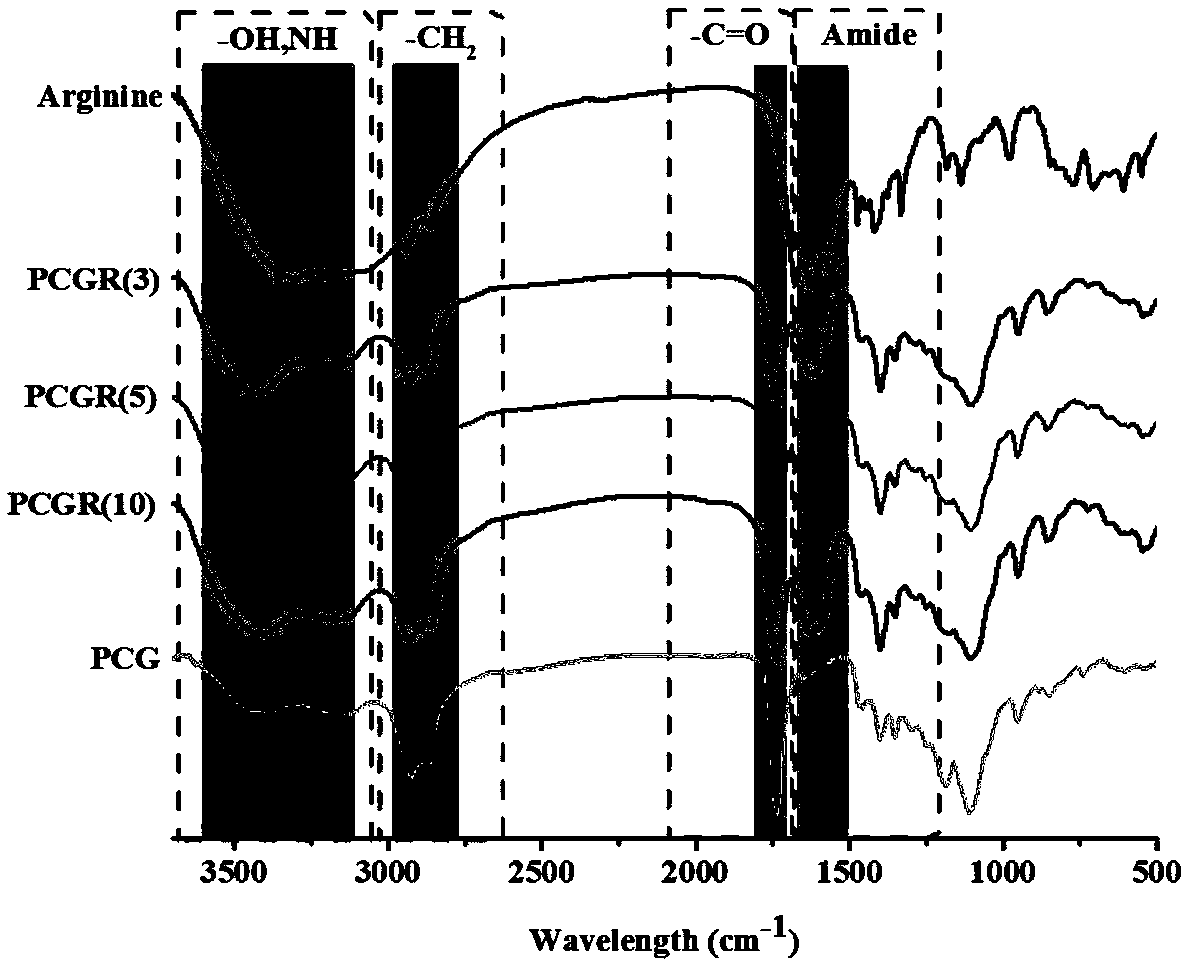Water-soluble degradable live cell fluorescent imaging material of non-conjugated structure as well as preparation method and application thereof
A fluorescent imaging and non-conjugated technology, which is applied in the direction of luminescent materials, material analysis and material analysis through optical means, can solve the problem that PCG does not have any fluorescent properties, achieve simple preparation methods, improve biological activity, and improve fluorescent properties Effect
- Summary
- Abstract
- Description
- Claims
- Application Information
AI Technical Summary
Problems solved by technology
Method used
Image
Examples
preparation example Construction
[0034] The invention is committed to preparing a water-soluble non-conjugated structure degradable living cell fluorescence imaging material with good biocompatibility and fluorescence characteristics, so that it has the ability of living cell fluorescence labeling. The preparation method comprises the following steps:
[0035] 1) Preparation of PCG prepolymer: thermally polymerize citric acid and diol with a molar ratio of 1:1 at 140-160°C under nitrogen or vacuum conditions to obtain PCG prepolymer. The diols are 1,8-octanediol and polyethylene glycol (PEG). The structural formula of PCG prepolymer is as follows (as figure 1 ):
[0036]
[0037] 2) Preparation of PCGA polymer: react PCG prepolymer and amino acid with a molar ratio of 1:(3~10) in 50mM MES buffer solution with pH 5~6, using EDC and NHS as catalysts to obtain PCGA polymer. The amino acids are L-arginine and polylysine. The structural formula is as follows
[0038]
[0039] Preparation of PCGS polyme...
Embodiment 1
[0045] 1) Preparation of PCG prepolymer: Add citric acid, 1,8-octanediol and polyethylene glycol into a round bottom flask at a molar ratio of 1:0.7:0.3, stir in an oil bath at 160°C under nitrogen Melting; after the reaction monomers citric acid, 1,8-octanediol and polyethylene glycol are all melted, the temperature is immediately lowered to 140°C, and the reaction is carried out under vacuum for 5 hours. The reaction product was dialyzed and purified in deionized water for 2 days, and freeze-dried for later use;
[0046] 2) Preparation of PCGR (3) polymer: Weigh 1 mmol of polycitrate (PCG) in 30 mL, 50 mM, pH 5-6 MES buffer and stir to dissolve completely, then add 4 mmol of EDC, and stir at room temperature for 30 min , followed by adding 4mmol NHS, stirring at room temperature for 12h, finally adding 3mmol L-arginine, stirring at room temperature for 12h, the product was purified by dialysis in deionized water for 2 days to remove unreacted monomers and catalysts EDC and N...
Embodiment 2
[0049] 1) Preparation of PCG prepolymer: Add citric acid, 1,8-octanediol and polyethylene glycol into a round bottom flask at a molar ratio of 1:0.7:0.3, stir in an oil bath at 160°C under nitrogen Melting; after the reaction monomers citric acid, 1,8-octanediol and polyethylene glycol are all melted, the temperature is immediately lowered to 140°C, and the reaction is carried out under vacuum for 5 hours. The reaction product was dialyzed and purified in deionized water for 2 days, and freeze-dried for later use;
[0050] 2) Preparation of PCGR (5) polymer: Weigh 1 mmol of polycitrate (PCG) in 30 mL, 50 mM, pH 5-6 MES buffer and stir to dissolve completely, then add 4 mmol of EDC, and stir at room temperature for 30 min , followed by adding 4mmol NHS, stirring at room temperature for 12h, finally adding 5mmol L-arginine, stirring at room temperature for 12h, the product was purified by dialysis in deionized water for 2 days to remove unreacted monomers and catalysts EDC and N...
PUM
 Login to View More
Login to View More Abstract
Description
Claims
Application Information
 Login to View More
Login to View More - R&D
- Intellectual Property
- Life Sciences
- Materials
- Tech Scout
- Unparalleled Data Quality
- Higher Quality Content
- 60% Fewer Hallucinations
Browse by: Latest US Patents, China's latest patents, Technical Efficacy Thesaurus, Application Domain, Technology Topic, Popular Technical Reports.
© 2025 PatSnap. All rights reserved.Legal|Privacy policy|Modern Slavery Act Transparency Statement|Sitemap|About US| Contact US: help@patsnap.com



